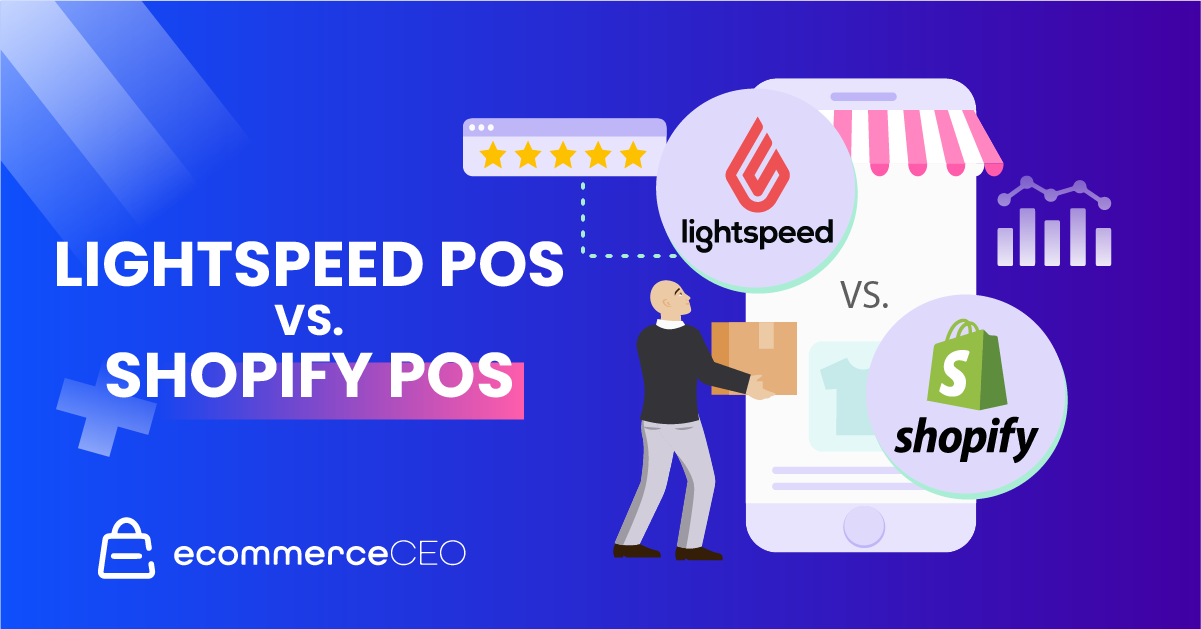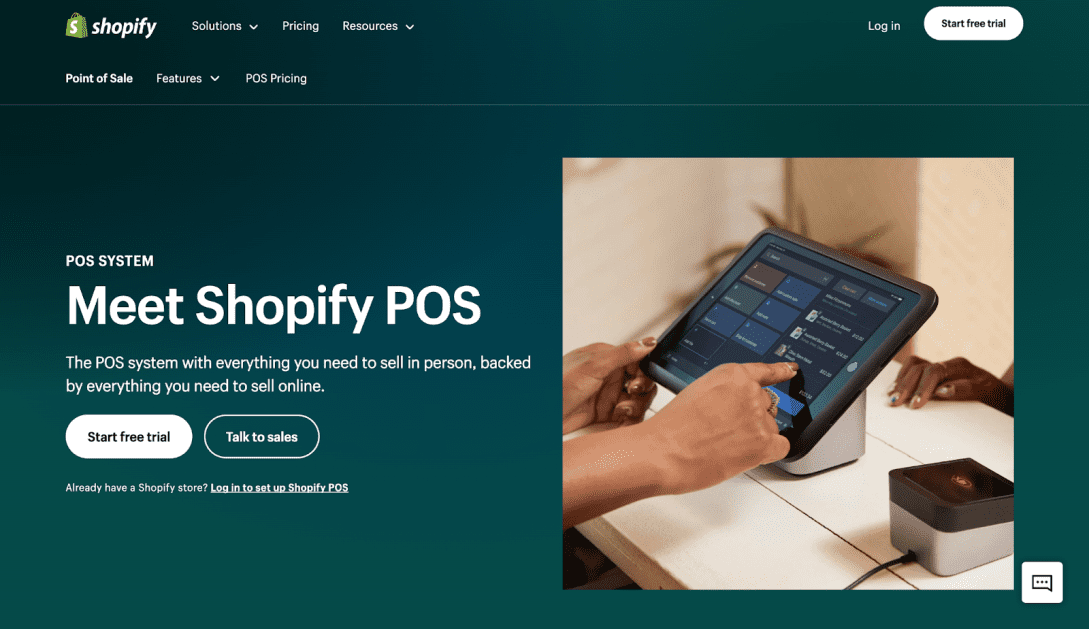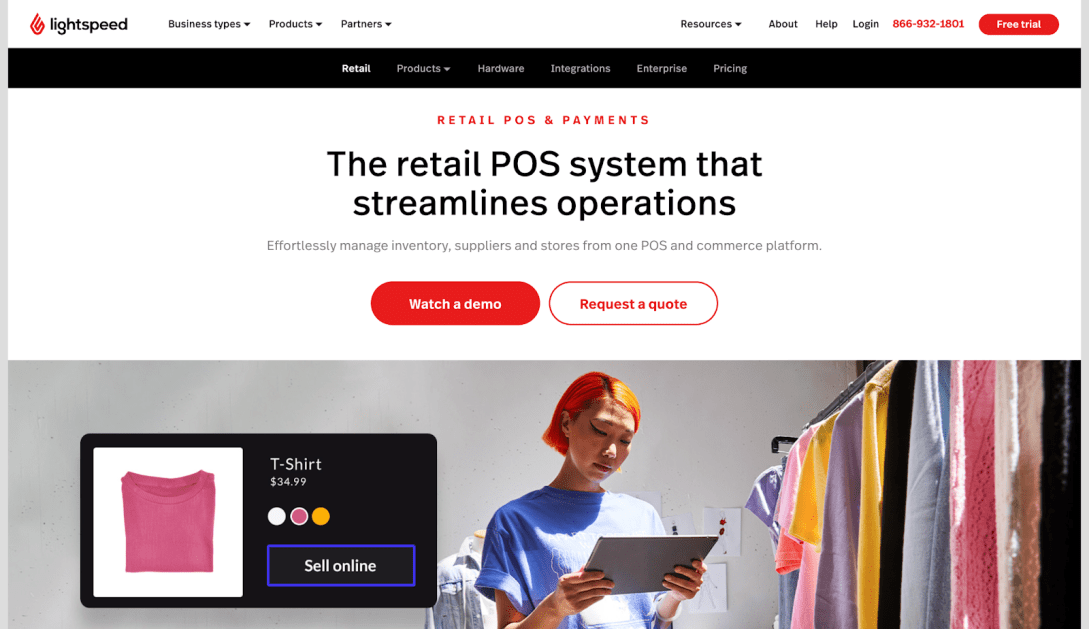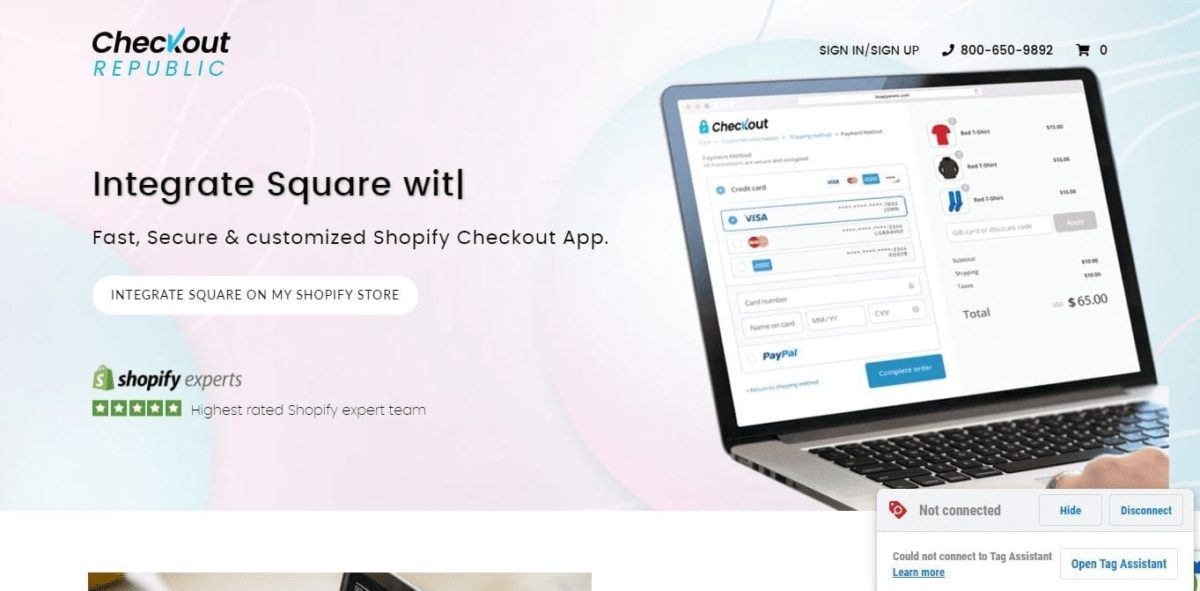The battle of Shopify POS vs Lightspeed POS can be complex. When you’re choosing a new point-of-sale system, both tools have a lot of benefits to offer.
On the one hand, Shopify is one of the best-known platforms in the world for ecommerce sellers, offering a wide range of fantastic features for business leaders. On the other hand, Lightspeed offers an all-in-one solution for all kinds of companies, whether you’re running a retail store, restaurant, or even a service business.

Both ecosystems are built for the modern business owner, offering access to functionality in an ever-changing and agile world. Today, we will to compare Lightspeed and Shopify POS, to give you a better insight into what each can do.
Difference Between Shopify POS vs Lightspeed POS
Both Shopify and Lightspeed POS have a lot of features in common. These tools are both designed to deliver extremely versatile feature sets to companies throughout the sales landscape.
What is Shopify POS?

Shopify is better known for supporting ecommerce businesses. With Shopify, you’re accessing point-of-sale technology from one of the better-known brands in the ecommerce world. Shopify is popular throughout the globe for its commitment to delivering highly flexible tools to a wide range of stores and businesses, so they can sell conveniently on the Internet.
The Shopify POS environment is just as flexible as the ecommerce service, with a custom POS terminal, fully integrated hardware, and access to endless tools for reporting and analytics.
What is Lightspeed POS?

Lightspeed POS is a well-known ePOS solution, meaning it focuses specifically on the software side of the point of sale environment. With Lightspeed, you can manage multiple systems in one environment, and access specialist features like “Lightspeed Delivery” to connect to platforms like Deliveroo and UberEats.
Pros and Cons for Your Ecommerce Business
While both Shopify and Lightspeed POS have their own unique strengths, it’s important to consider the pros and cons of each platform before making a decision.
Shopify POS offers seamless integration with Shopify’s ecommerce platform, meaning you can manage everything in one place. It’s also highly customizable, with a range of add-ons available. However, it may not be the best fit for larger businesses that require advanced inventory management.
On the other hand, Lightspeed POS offers robust features for inventory management and reporting. It’s also designed to meet the needs of various industries, making it a great all-in-one solution.
Both Shopify and Lightspeed POS offer reliable customer service, with 24/7 support available to users. Shopify provides assistance through email, phone and live chat, while Lightspeed offers similar customer support channels, plus access to a community forum where users can ask and answer questions.
Ultimately, the choice between Shopify POS and Lightspeed POS depends on your business needs and goals. Take some time to evaluate the pros and cons of both options before making a decision that best suits your business.
Store Management Software from Shopify and Lightspeed
There’s a decent amount of overlap between the features of Shopify and Lightspeed POS. Both tools can offer everything from in-depth reporting and staff management, to inventory tracking. Both of these solutions are also more focused on the digital world.
Omnichannel selling
Omnichannel capabilities are an important factor when considering a POS solution. Shopify POS allows business owners to take their Shopify store into the real world with a host of useful features. The versatile retail POS can integrate with a range of powerful hardware options, including simple and portable Shopify card readers.
With Lightspeed POS, you can manage multiple systems remotely and on the move with an intuitive range of modern software tools. However, the Lightspeed environment specifically focuses on a few set industries, while Shopify is more versatile.
With both Lightspeed and Shopify, you get access to a powerful POS terminal. Shopify allows you to personalize your point of sale according to your business needs, with access to all of your most-used apps, discounts, and products in one place.
With Lightspeed, you can access all of your features remotely from an iPad or mobile device, to keep track of performance wherever you go.
With Shopify, you can:
- Manage and fulfill pickup orders directly
- Buy in-store and ship to the customer
- Buy online
- Exchange and return in store
- Access local delivery features
- Send carts to customers so they can buy products online
- Attach QR codes to products
Lightspeed offers specialist tools like Lightspeed ecom to help you reach more customers online, while Lightspeed delivery connects you to various online delivery platforms like UberEats, JustEat, and Deliveroo.
Inventory and staff management
From an inventory management perspective, Shopify ensures you can create purchase orders for suppliers and vendors, and access demand forecasting based on seasonality and performance. You can request transfers from other POS locations, keep track low stock, and discover sale item suggestions too.
Shopify’s ecosystem comes with:
- In-depth inventory analysis
- Stock adjustments
- Inventory counts
- Inventory receiving counts
Detailed inventory reports also allow you to track trends and confidently plan for the future.
With Lightspeed, you get a smart inventory management tracking system where you can import stock from every location and organize shipments from an ecommerce back office. There’s also the option to sync inventory across all locations, and centralize purchasing with built-in purchase orders.
For staff management, Shopify has a lot to offer too. Staff management tools include manager approvals, unlimited POS staff, and access to various roles and permissions. You can attribute sales to staff members, give staff POS PINs, and track employee performance.
With Lightspeed POS, you can manage multiple systems from an all-in-one environment, and keep track of employees wherever they are.
Customer management
From a customer management perspective, both tools allow access to a range of features designed to turn your customers into lifelong fans.
With Shopify, you can create comprehensive customer profiles, which you can access when customers are checking out online or offline. The rich customer profiles help you to track contact information, purchase history, lifetime spending habits, and more. You’ll also have access to tools for reaching out to your customers through your point of sale.
You can reward loyalty online or in-store with a loyalty program and set up marketing campaigns to improve your chances of repeat purchases.
While Lightspeed doesn’t have the same lead nurturing features as Shopify, it still allows you to track customer information, and set up loyalty strategies, with custom gift cards. You can also separate customers into different segments to create more personalized sales campaigns.
Payment Processing
When it comes to payment processing, both Shopify POS and Lightspeed POS offer secure and reliable credit card payment options for your business.
Shopify offers its own payment gateway, Shopify Payments, which has competitive rates and integrates seamlessly with the platform.

Lightspeed POS also offers a range of payment processing options, including integrations with popular gateways like Stripe and PayPal.
In terms of transaction fees, Shopify charges a flat rate per transaction while Lightspeed charges a percentage fee based on the transaction amount. However, Lightspeed does offer lower rates for high-volume businesses.
When it comes to choosing between Shopify POS and Lightspeed POS, one factor to consider is the card reader. Shopify offers a tap & chip card reader for $49, along with other accessories like a dock and retail stand. Lightspeed also includes a card reader in their pricing plans. Depending on your business needs, the cost of additional registers may vary for both platforms. It’s important to weigh the pros and cons of each system before making a decision on which one to go with.
Both Shopify and Lightspeed POS offer great solutions for managing your in-store and online sales. However, Shopify stands out for its outstanding ecommerce and online sales features, making it a great choice for businesses that heavily rely on online sales. On the other hand, Lightspeed is known for its strong inventory management tools and customer support. Ultimately, the right choice depends on the specific needs of your business.
Checkout, Reporting, and Analytics
For checkout and reporting, both Shopify and Lightspeed have plenty of great features.
On the Shopify Checkout page, you can exchange past purchases from any online or retail locations, and save and retrieve carts for customers. You can custom print receipts with your website URL, promotions, store hours, and policies too.
With the Checkout service, you can take your smartphone or tablet to your customer, access customizable smart grids to deliver cues to staff, and offer discount codes. Taxes are automatically calculated according to your store’s location, and you can record order notes too.
Shopify supports offline cash transactions, returns, custom discounts, and barcode scanning.
Lightspeed offers contactless, easy payments to suit a range of retail and restaurant locations. The fully-integrated system helps to protect businesses from fraud and human error, and there’s access to paperless receipts directly delivered to your email address.
Lightspeed Retail’s ecosystem is fully PCI compliant, and packed with features to strengthen your connection with your customers, including gift cards and voucher codes.
From a reporting perspective, Lightspeed allows you to check on sales, trends, and profits with immersive revenue reports. You can track costs and margins across multiple locations at once, access templates for inventory reports, and check employee performance on factors like units per sale, and work orders. There’s also “Lightspeed analytics” for additional custom reporting.
With Shopify, there’s access to daily sales reports, so you can make more informed decisions about your digital landscape, with insights into products, sales, and staff performance, all compiled in a daily report generated directly from the POS.
Shopify offers custom dashboard overviews, retail sales reports, cash tracking, and comprehensive cash flow reports. You can get insights into which products are selling best, leverage discount and inventory reports, and generate in-depth insights into your finances too.
Hardware
Both Shopify and Lightspeed are more focused on the software side of selling than the hardware you’d typically use for an offline point of sale. However, that doesn’t mean you can’t access hardware tools from both vendors.
Lightspeed’s main solution for hardware is the iPad hardware kit, which comes with a cash drawer, LAN receipt printer, iPad stand, Bluetooth scanner, and receipt paper. This allows you to simply use your iPad as the primary system for managing your point of sale.
If you want something a little more traditional, the desktop hardware kit comes with a USB receipt printer, cash drawer, and USB scanner. Alternatively, you can access third-party tools as accessories, like the Zebra label printer, Bluetooth barcode scanners, and more.
Shopify’s hardware also covers a wide range of options. There’s a Shopify retail bundle with everything you need to accept tap and chip payments in an instant. If you want something a little simpler, the WisePad 3 reader allows you to accept payments quickly and easily anywhere.
Shopify’s hardware store also offers access to a range of accessories, including barcode scanners, receipt printers, and tools for using your iPad as your primary point of sale. You can reach out to both companies for a comprehensive insight into pricing.
Lightspeed vs Shopify POS Pricing
Pricing is always a significant consideration for any business investing in new technology. With Shopify and Lightspeed, there are a few different options depending on what you need.
Shopify POS Pricing
Starting with Shopify, to access the POS system, you’ll need a Shopify ecommerce plan. Usually, options start with Shopify Lite, which allows you to add a store to an existing site with a button. However, you’ll need at least the Basic plan from Shopify to start using Shopify POS features. Your options include the following:
- Basic Shopify: The Basic plan is $25 per month with access to support for unlimited products, multiple sales channels, and transaction fees starting at 1.7%.
- Shopify: The standard Shopify plan is $69 per month for all the Basic features, plus local payment methods, standard reports, and 5 inventory locations. Here, transaction fees start at 1.6% instead.
- Shopify Advanced: The Advanced Shopify service is $259 per month for all the features of the standard plan, plus ecommerce automations, third-party shipping rates and advanced reports. You’ll have access to 15 staff accounts and 8 locations, and transaction fees starting at 1.5%.
Shopify Plus, which is the advanced enterprise package, comes with access to Shopify POS Pro. The rest of the packages come with free POS Lite. The Pro package is available with all packages outside of Plus for $89 per month with access to more inventory management tools, workflows and staff permissions.
Lightspeed POS Pricing
Lightspeed pricing depends on whether you’re shopping for Lightspeed “Retail”, or “Lightspeed Restaurant.”. Both options offer access to specific tools, either for retail or food service selling. In the retail category, options include:
- Free Plan: Basic ecommerce store setup.
- Venture: $14.08 per month for the retail ePOS, and ecommerce functionality.
- Business: $29.08 per month for all the features of Venture, plus Loyalty capabilities.
- Unlimited: $82.50 per month for all the features of Business, plus in-depth analytics.
You can start with a free plan that comes with a website builder and receive an online store to easily launch your business.
Interestingly, Lightspeed also has a dedicated “Golf” package, where you can access event management, a Tee-sheet, business intelligence, and online booking, among other features. This service is offered with a customized quote.
FAQs
Still Deciding on the Right POS System?
Ultimately, if you’re looking for a powerful way to sell to customers both online or in a brick-and-mortar store, it’s hard to go wrong with either Shopify or Lightspeed POS.
Shopify is an incredible tool for building immersive online store experiences. The flexible ecosystem is great for offline selling too, with tons of features to help you strengthen your relationship with customers. Shopify empowers fantastic omnichannel sales and marketing strategies, with hundreds of integrations available to your favorite tools.
Lightspeed also offers fantastic omnichannel strategies for sales, but the company focuses more on specific types of companies. The retail solution from Lightspeed is excellent, but it particularly shines when it comes to offering custom restaurant features. Lightspeed is also one of the few POS solutions on the market that has its own golfing features.
Ultimately, whether Shopify or Lightspeed is right for you will depend on the kind of customers you most want to connect with.










